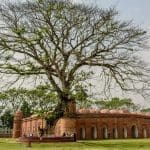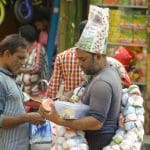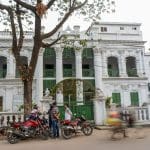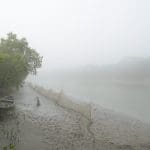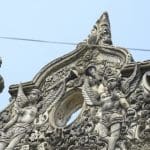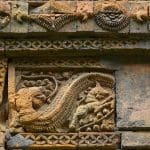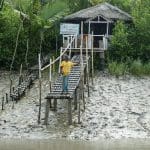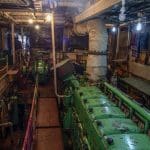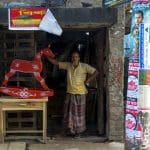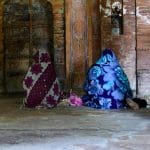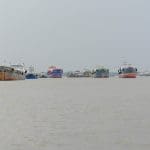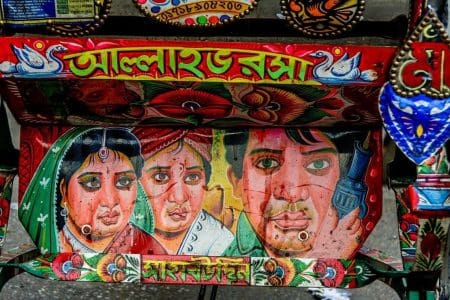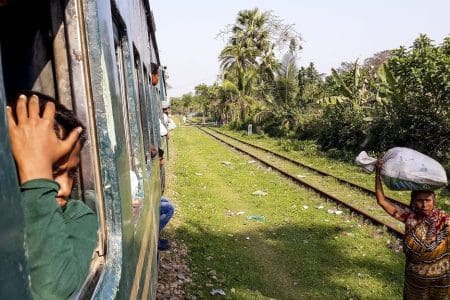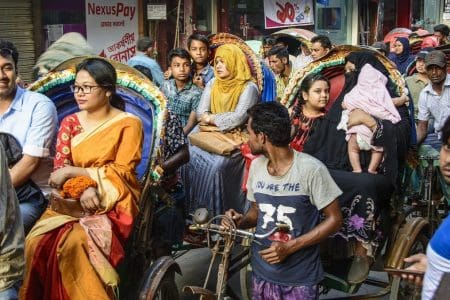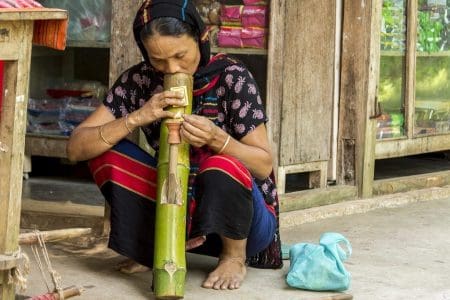Taking an old paddlewheel steamer from Dhaka to the Sundarbans Mangrove Forest in Bangladesh, Johan Smits finds poetry, a lost city and a vast water forest.
“What beauty, what shades, what affection, what tenderness!
What a quilt have thee spread at the feet of banyan trees and along the bank of every river.”
These are lines from Bangladesh’s national anthem, written by the Bengali poet and Nobel Prize Laureate Rabindranath Tagore, the number one hero and greatest pride of all Bengalis. When I first hear it sung, it’s by a skinny 13-year-old boy. And like all 13-year-old boys in the world whose voices haven’t broken yet, he sounds a little monotonous but also fragile, just like the battered harmonium he’s playing to accompany his song.
The boy is the son of Shripati, the manager of our eco resort, Gol Kanon. We’re at the edge of the Sundarbans Mangrove Forest – the world’s largest stretch of mangroves in the Bay of Bengal – and the night’s darkness has covered the area like a thick fire blanket. A single solar-powered lamp illuminates the “special cultural programme” that is being performed for us, the two foreign guests. Although I don’t understand the Bengali lyrics until they’re being translated for me afterwards, I’m taken by the friendly melody, the intimate setup and the boy’s calm passion. Unlike most national anthems heavy with martial themes and inflated heroism, Bangladesh’s song is all about love, joy and beauty. How appropriate, I’m reflecting, for it to be sung here in the peaceful Sundarbans by this tender-aged musician.
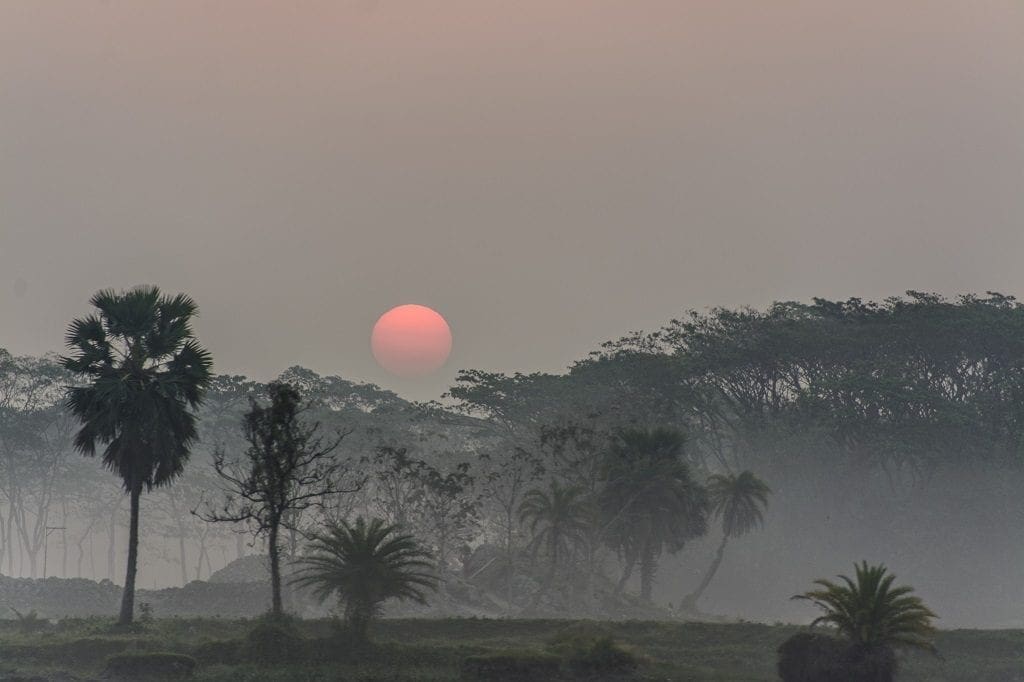
Life On Board a Rocket
Half a week earlier my French friend Robert had joined me in Dhaka, Bangladesh, from where we would start our journey by river. Robert lives in Southeast Asia where he runs Solidarasia, a travel company for equitable tourism, and he understands the region like nobody else. When he’s not taking tourists with him, he likes to travel au hasard – or randomly – as he puts it, so I knew there wouldn’t be complaints about any discomforts that my lack of organisation might throw at us. Which would prove to be a blessing.
Taking the Rocket is like travelling by floating museum
A setting sun has submerged the entire Dhaka river port in grimy orange by the time we board the legendary paddlewheel steamer, the “Rocket”. They’re called that because at the early twentieth century they were the fastest mode of river transport. A more appropriate name would be “Turtle” for nowadays they’re amongst the slowest passenger boats despite their conversion to diesel propulsion in the eighties. There are only four Rockets left in operation and ours is the PS Lepcha built in 1938. Not an inch is left without dents – taking the Rocket is like travelling by floating museum.
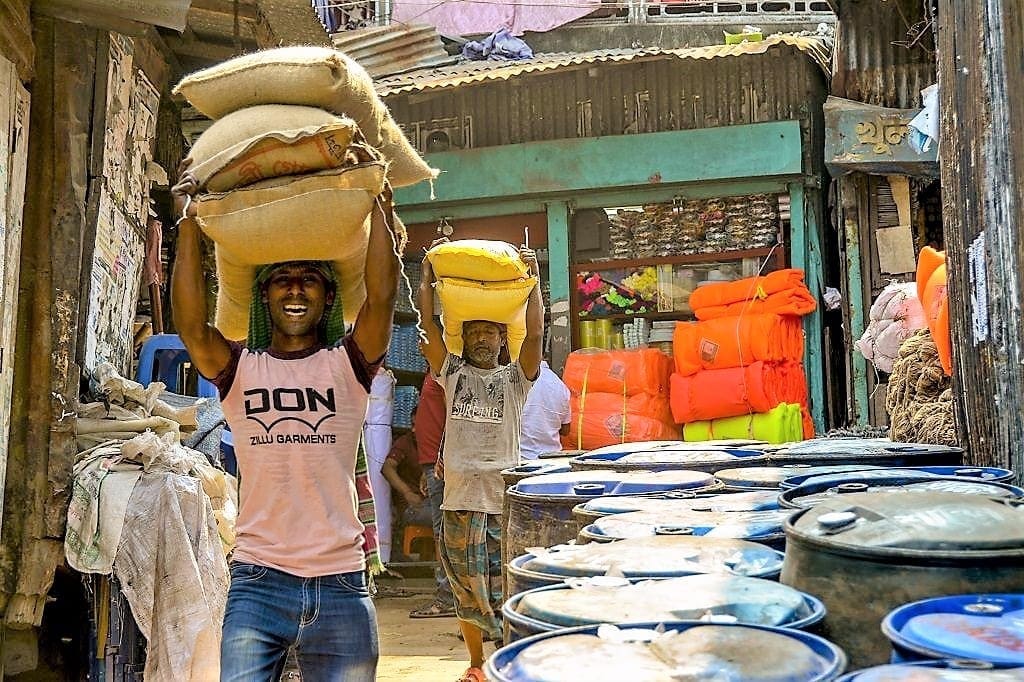
Unlike in other museums, nothing seems ‘off limits’. We go up to see the captain inside the small, dingy bridge that looks like an unkempt dorm room, we peek inside the grubby kitchen where the cook is cutting up vegetables, and we explore the massive engine that shudders and growls like a sick dragon inside the ship’s belly. It’s when we go down to the lowest level that we meet twenty-something Abdul, one of the crew.
He’s worked on commercial vessels abroad, Abdul tells us, and on Bangladeshi’s paddle wheel steamers for two years. I ask him if he could let us peek inside the crew’s quarters. Bunk beds stuffed in a narrow cabin, stomach-churning squat toilets, and a working space at the back without a railing where a moment of inattention may have you misstepping into the pitch-dark river water that is nearly level with the floor. Abdul’s working conditions seem as ancient as the boat itself.
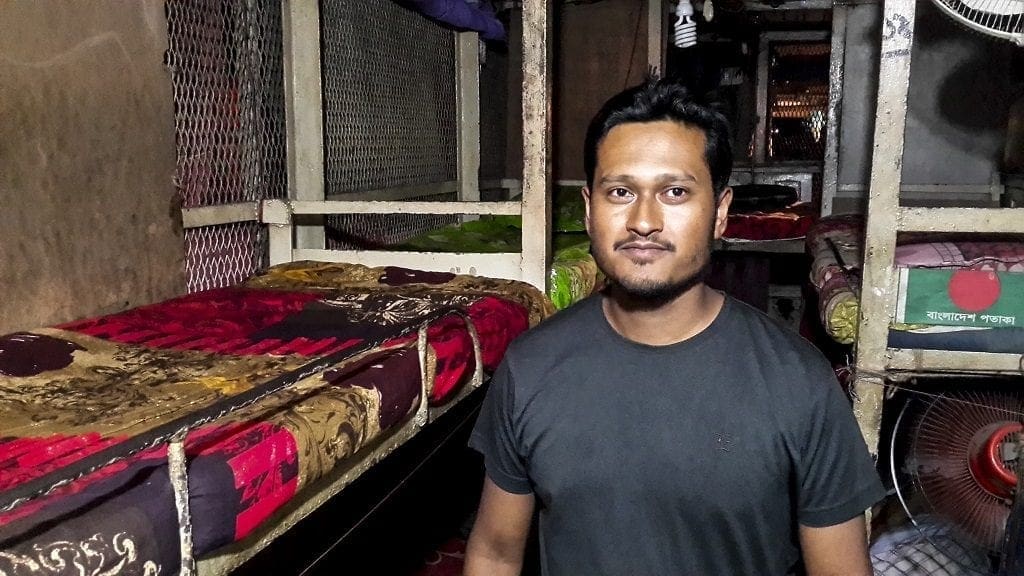
Back in the comfort of our first class cabin – ours is a beaten-up haven with two Spartan beds, clean-looking sheets, a rumbling air-conditioner and a broken sink – we drink Irish whiskey out of tin cups. Robert has had the good foresight of bringing along some of our favourite poison to ease the anxiety of travelling in a country where alcohol is difficult to get hold of. It doesn’t take long before the whiskey and the steady throb of the dragon below lulls me into a pleasant slumber.
Travelling by paddlewheel steamer is both adventurous and romantic. When we stop in the early morning at the port city of Barisal, I’m sitting on the empty, first-class front deck watching how the sweltering Bengali sun struggles to rise through dense mist over the river. It’s unforgettable. Yet, this isn’t a steamer converted for the benefit of shuttling tourists up and down pretty waterways. The Rocket is a genuine, octogenarian mode of common transport for people and their goods. A foreign tourist or a middle class Bangladeshi can fork out the 32 dollars for a first class cabin in which to enjoy the 16-hour overnight voyage from Dhaka to Hularhat. But one glance at the traders and families packed all night with their belongings on the floor of third “deck” class is enough to dispel any notion of a leisurely pleasure trip.
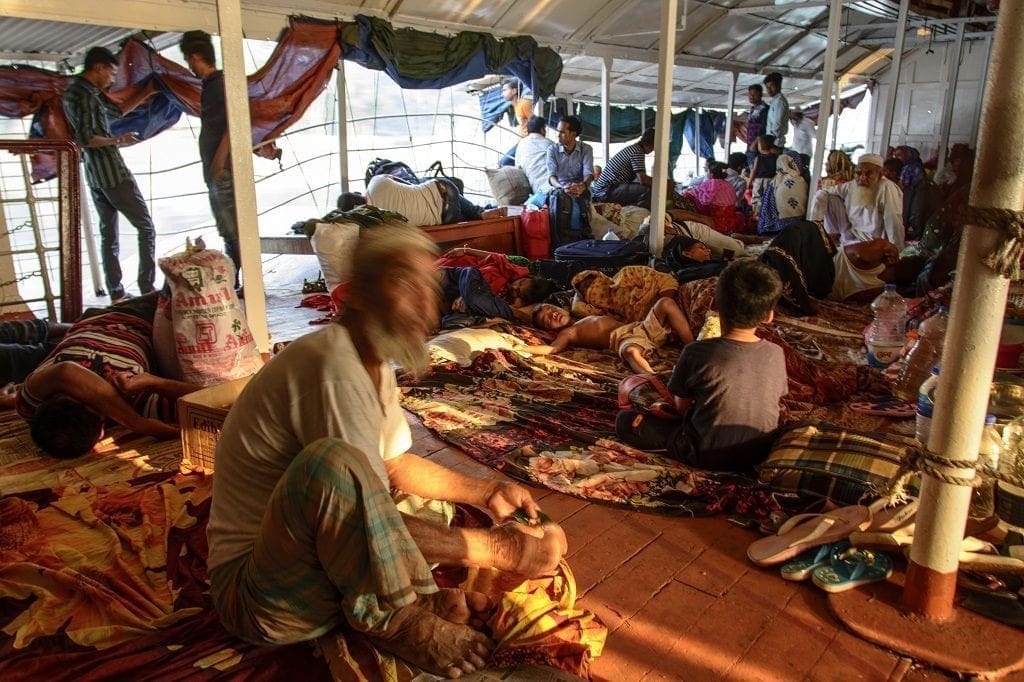
A Lost City
In Bangladesh, travelling au hasard makes for a perfect balance between surrendering some level of comfort against a real sense of adventure and discovery. The two-and-a-half-hour sweaty bus trip from Hularhat – where we alighted the paddlewheel boat – to the provincial capital of Khulna; the private kamikaze driver who speeds us to the dreary river-port town of Mongla; the bone-rattling ride on the hard wood of a trailer pulled by electrical bicycle to our resort – they are decidedly less comfortable than the romantic river ride on the Rocket. And so are some of the bleak hotel rooms we end up in along the way. But they’re not discomforts that can’t be relieved by a tipple at the end of the day, while the absolute freedom of making travel decisions on a whim is truly liberating.
For solo travellers seeking to connect with others, Bangladesh is El Dorado
Many of our discoveries are magnificent examples of architectural faded glory, mostly from British colonial times. Yet, some of the best encounters come in the form of people – fellow boat passengers, mosque keepers, street kids, dockworkers, shop owners, random people on the street, each with their own, unique story to tell or simply eager to be on a selfie with you. For solo travellers seeking to connect with others, Bangladesh is El Dorado.
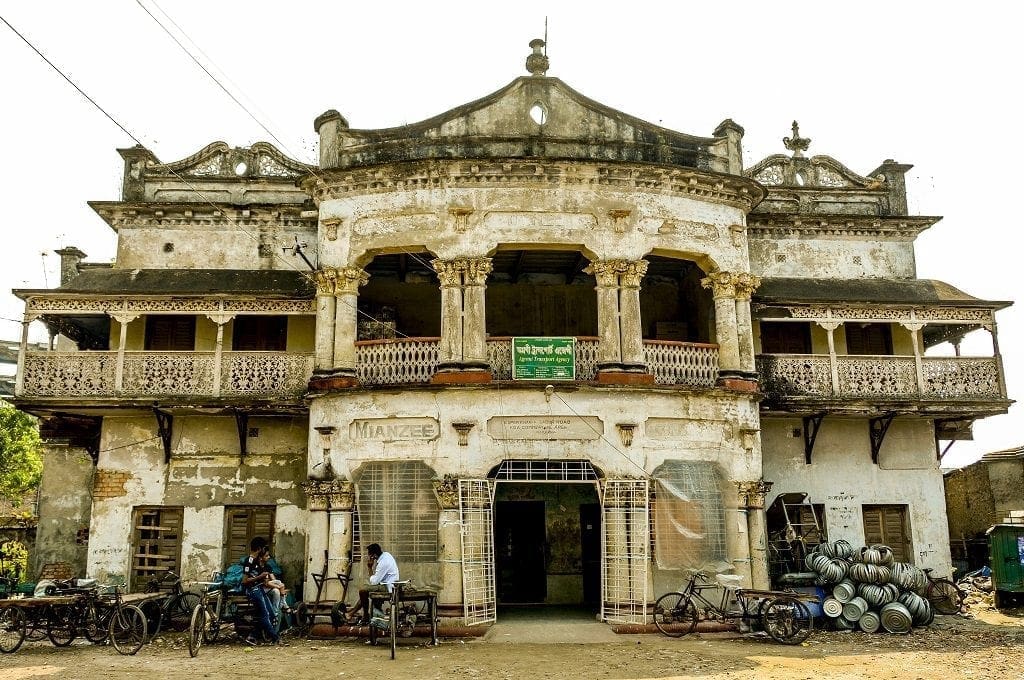
In Khulna we stop to admire a stately but severely dilapidated neoclassical building – a local high school. Its director, an elderly, well-spoken lady, invites us for a cup of tea and a chat inside a cramped, battered room that functions as her office. Many of the students come from across the river, she explains, and when the weather is bad they can’t make it to school. But the director is also concerned about her own future – she’s due to retire soon. “Our salaries are very low,” she says, “the teachers have second jobs, or their husbands supplement their income. I don’t have either.”
From Khulna we make a day trip to explore nearby Bagerhat, a Unesco World Heritage Site. At one time still part of the Sundarbans mangrove forest and reclaimed by jungle at the end of the 15th century, this formerly lost city has more medieval Islamic monuments than any other place in Bangladesh bar the capital. Hundreds of ancient mosques, mausoleums, water tanks, bridges and public buildings are scattered over a 50-square-kilometre area amongst villages and farmlands. An El Dorado yet again, this time for history buffs.
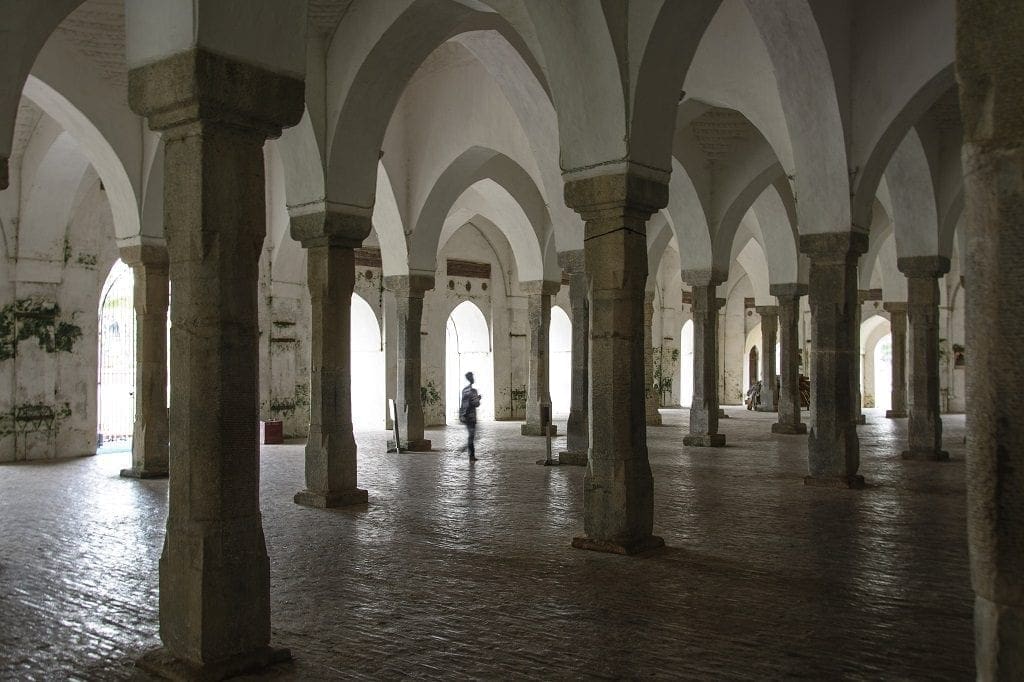
The centrepiece of this archaeological paradise is probably the Shait-Gumbad Masjid. Although the name means “Sixty Dome Mosque”, this 1442 architectural wonder has in fact 81 domes, making it one of the most impressive Muslim monuments in the Indian subcontinent. While the vast, multi-domed roof looks iconic from the outside, the mosque’s interior is simply stunning for its forest of stone columns and arches lined up in perfect symmetry.
Arriving at the Sundarbans Mangrove Forest
It’s the next day that we finally arrive at our little resort. It consists of four basic huts, a shared toilet-bathroom, one solar-powered plug to charge phone and camera batteries, and a half-open bamboo structure that doubles up as dining space and boat jetty. In front of me, across a murky river, the dense, green expanse of the Sundarbans slowly turns black as the sun sinks behind it. It is also home to the highest density of the endangered Royal Bengal tiger anywhere on earth. That night, dozing off under my mosquito net, I wonder if we will be lucky enough to spot one of the elusive big cats.
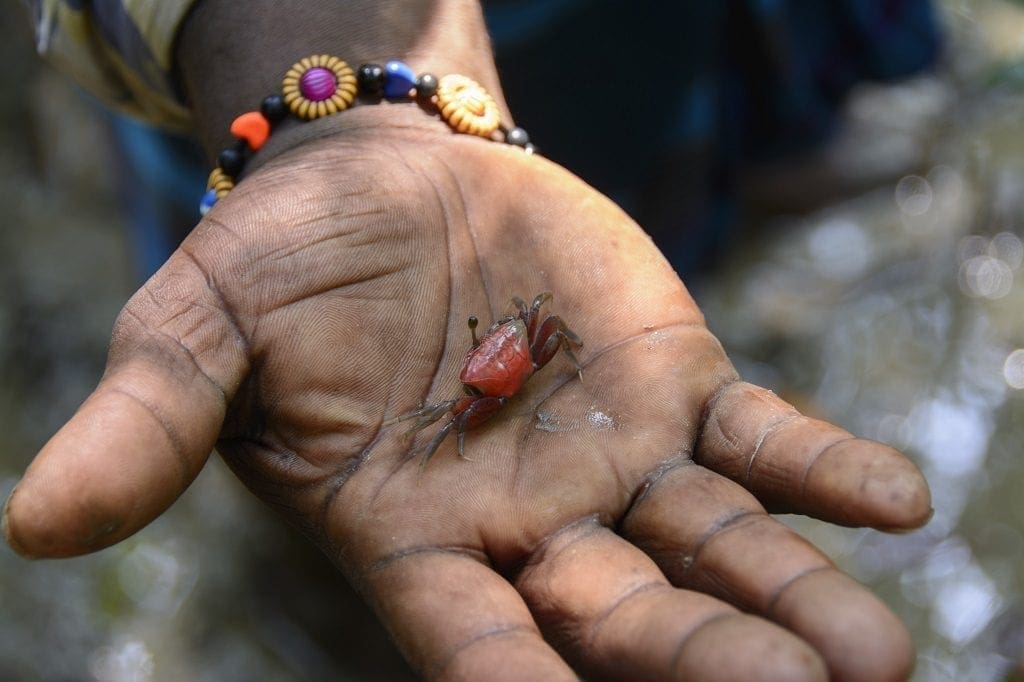
Instead of the Sundarban tiger, what we mostly see the following day are enormous cargo ships and oil tankers travelling on the Passur River. Not quite what we expected. That morning we hired a small boat and its owner to take us to the Harbaria Forest Station into the Sundarbans, as recommended in our outdated Lonely Planet guide. The station, it turns out, is situated not deep at a quiet spot inside the mangrove forest but at the shore of the busy waterway that connects Mongla, Bangladesh’s second port, to the open sea. When I spot endangered South Asian river dolphins leaping out of the water amongst the polluting cargo ships, I don’t feel excitement. Instead, a deep sadness seizes me.
At the forest station an armed ranger takes us along a 15-minute stroll on a raised walkway into the forest. We spot different species of birds, such as kingfishers and ospreys, tiny red crabs, and a large stork which I would later learn is a lesser adjutant. But the noise of the maritime traffic is never far away.
My disappointment morphs into fascination when, on the way back, we stop at a second, more popular forest station called Karamjal. Boatloads of local tourists and students swarm the area attracted by the crocodile breeding centre and the troops of monkeys begging for candy handouts. The deafening noise of humans overrules the sounds of wildlife, while sweet wrappers, empty plastic bottles and other rubbish defile the landscape. The natural treasure that is the Sundarbans evokes huge collective national pride but not yet, it seems, the individual ecological awareness needed to keep it alive.
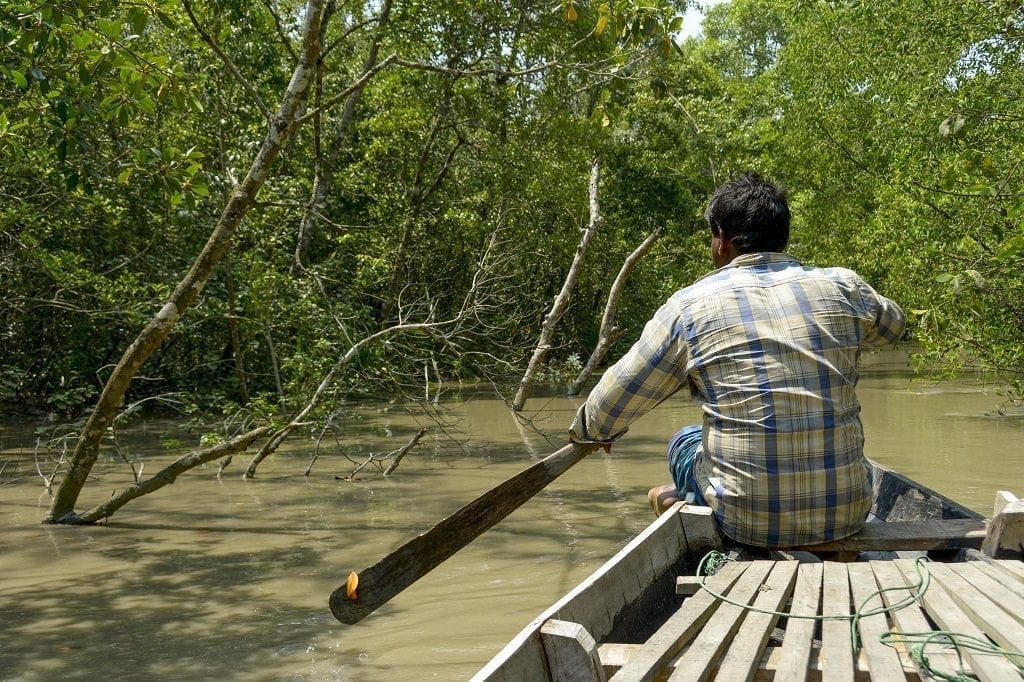
In as much as our first encounter with the Sundarbans left us rattled, the next day’s excursion provided the soothing balm. Shripati and his helper take me and Robert in a rowing boat through small tidal streams and channels into the blissfully quiet mangrove forest. For hours, we float underneath the thick canopy dominated by sundari, the hardwood tree of which the Sundarbans National Park derives its name, spotting yet more species of birds, as well as the funny mudskipper, a small amphibious fish that can climb low branches.
After a long while, Shripati moors and takes us for a walk through the muddy mangroves. The tide will be coming up again in an hour, he says, which is the amount of time we have before the forest floor submerges. The contrast with yesterday could not be bigger. Pristine nature, absolute quiet and the omnipresent water turn our day into a magical, otherworldly experience.
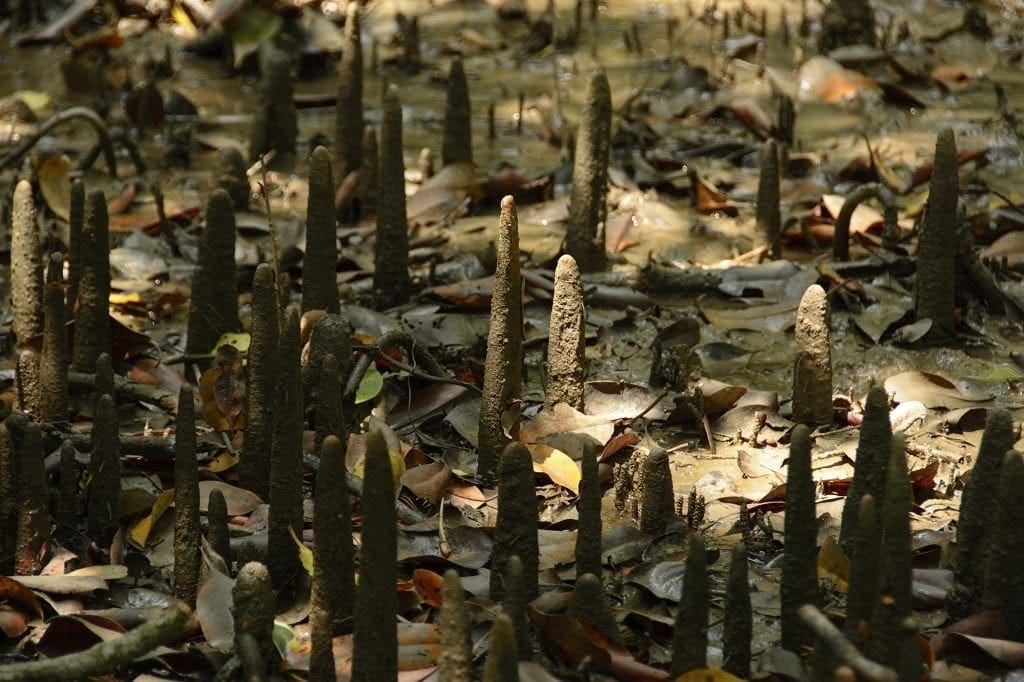
I could happily spend several days venturing deeper into the mangroves, as some local tour companies offer. But, continuing my slow walk trying not to destroy any vegetation, I wonder if in today’s fragile ecology this is still an option. From a century ago, the Sundarbans territory has shrunk considerably to its current 10,000 km2 of which only 15 percent is protected area, including four Unesco World Heritage Sites. Its ecosystem is under tremendous pressure from both human activity and natural hazards, such as cyclones. Perhaps, I muse as we plod back through rising water, until the local government enforces a more rigorous ecotourism policy, we should just contend ourselves to less impactful daytrips that don’t disturb the fragile Sundarbans ecosystem we all so much depend upon. Tant pis for not spotting that tiger.
The following day, as we pass once again through Mongla on the next leg of our trip, it strikes me how the friendliness of Bangladeshis and the beauty of their country make for a sobering contrast with the environmental pollution we encounter. I wonder if Tagore had any foreboding of what was to come when he wrote the last verse of his national anthem:
“If sadness, O mother! casts a gloom on your face, my eyes are filled with tears!”
Where to stay in the Sundarbans Mangrove Forest
Gol Kanon Eco Lodge is located less than an hour from the river-port town of Mongla. Contact Shripati Bachar who used to be a seasonal farmer and now runs the lodge. His English is limited so if possible have someone speaking Bengali on stand-by. Tel: +880 (0)1924322781. Alternatively, book via the resort’s local agent on Facebook.
What to bring to the Sundarbans Mangrove Forest
Apart from a bottle of whisk(e)y and a powerbank to charge phone and camera batteries, bring Salman Rushdie’s Booker Prize winning novel, Midnight’s Children and Amitav Ghosh’s 2004 novel, The Hungry Tide, of which parts are set in the Sundarbans.
Sundarbans Mangrove Forest Tours
If you like to visit Bangladesh and the Sundarbans on an organised tour, local tour companies that are often recommended include Nijhoom Tours, Bengal Tours and Royal Bengal Tours.
Read “Bangladesh Travel: Rivers, Relics and Wrecks” to join Johan on his next leg of travel through the country.
Voyage to the Sundarbans Mangrove Forest, Bangladesh: photo gallery
For more Bangladesh topics, read our photo essay on Bangladesh rickshaw art.
